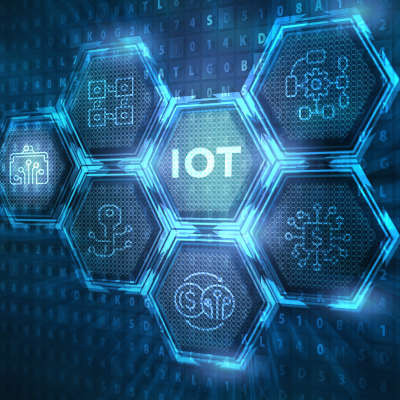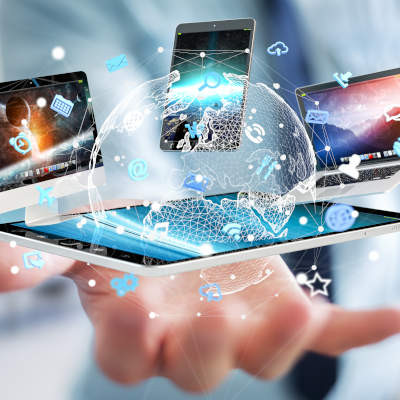Jackson Thornton Technologies News + Updates
It's no secret that small businesses are facing one of the toughest periods in decades. The COVID-19 pandemic and many other issues have made them change the way they approach operations, sales, and other aspects of their businesses. Today, they need to explore more strategies that can support customers who also have had to adapt. Today, we’ll talk about a couple of the trends we expect to see in IT in 2021.
Ask someone what they think social media has done for society, and you will likely hear a series of complaints about how it is the driving force behind the most divisive period in human history. While their perspective is interesting, it is also wrong. Today, we thought we would take a look at how some of today’s most controversial technologies are working to improve society.
As much as you hope it will not happen to your business, a disaster could very well strike at any time—statistics have shown as much to be true. To remove some of the risks associated with disasters and the data loss they lead to; we recommend that you implement BDR into your business continuity strategies.
Nothing will annoy tech-savvy people more than listening to someone that basically doesn't know what they are talking about, but uses technology jargon to seem like they do. It’s pretty confusing for the non-technical too. This annoyance is largely due to the gap between using words and understanding complex and detailed technology processes. So, while there is some respect given to people who work to understand the terminology, most of the time, it’s just too much.
Human resources (HR) may not get the attention that many other parts of your business do, but it remains important. HR plans and coordinates most of the administrative issues of a business. They deal with onboarding and offboarding personnel, are a big part of a business’ strategic planning, and function as a bridge between a business’ workers and its decision makers. With all that responsibility, HR can sometimes get bogged down with work, putting a business behind.
Seeing as technology is a critical component of most business processes nowadays, it is effectively guaranteed that it will benefit your operations to abide by a few particular best practices. Let’s review these practices now so you can move forward and use your technology to its highest capabilities.
With so much confusion, crisis, and conflict happening over the past year, businesses of all sizes have turned to technology as a necessary means of remaining open. As a result, the perspective many these businesses have of their IT has shifted considerably. Let’s explore some of the revelations that organizations have had, and how they’ll impact operations from this point on.
With every business having at least some revenue generation in their list of priorities, it is important that an organization understands how technology can help eliminate inefficiency through improved collaboration and productivity. Let’s consider a few modern tools and solutions that can help a business as it strives towards its goals.
While it may sound strange coming from a managed service provider, there is some wisdom to the adage, “if it ain’t broke, don’t fix it.” We know, we know… it sounds a little hypocritical for us to say something like this, when we spend so much time touting the values of proactive maintenance and similar strategies. However, this now-cliché statement certainly holds water, as exemplified by many modern technologies—including the Boeing 747.
Smart assistants commonly appear in the office and home, so much so that the novelty seems to have finally worn off and they are now just another appliance—and, like any other appliance, there are a few quirks that can be frustrating to deal with. For instance, anyone living around these devices has shared a particular experience: the device registering something as a wake word that certainly wasn’t meant to be the wake word.
Since 1982, the technology known as the Internet of Things has given the devices around us greater capabilities through artificial intelligence and Internet connectivity. While this technology spent a long time existing under the radar, so to speak, many business functions are now relying on its benefits. Let’s take a few moments to look at how the IoT can be of use in your business.
The world isn’t the same as it was at this time last year. With months of question marks surrounding business, and with more people than ever searching for their place, companies have had to make some operational concessions that, if we were to assess the situation today, don’t seem to be going anywhere, anytime soon.
Many business owners understand the benefits that technology can have for a business, but just can’t bring themselves to commit to implementing that technology due to the cost, either in capital expenditures or in the shift in operations. The fear of not being able to successfully integrate certain technology will, over time, hold your business back. Today, we’ll describe why it’s essential to have a technology strategy, and how to stick to it.
When we think of cybercrime, most people’s minds go to one of two places. On the one hand, some think about the annoying, misspelled emails that are so obviously scams, while on the other, we can’t help but think about the hacks that we see in movies, where a criminal manages to overcome the best the government can incorporate into their defenses.
Professional services include some of the oldest professions in the world, and some of the newest. Regardless of what kind of professional services business you run, it is hard to continue to meet your customer’s needs without incorporating some technological changes. Furthermore, there are new innovations that can help your business thrive. Let’s examine some of this technology to see if it could benefit your business.





















